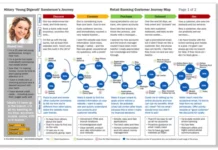My friend Bob, a Scottish fellow who has worked with people longer than I’ve been alive, said something a while back that really stuck with me. We were talking about how people relate to each other when he said, “The problem is we focus too much on what we’re saying, and not enough on how we say it.”
While I’ve heard something similar said many times, the way Bob emphasized it from the perspective of the person talking was different.
Think about it.
It’s not what is said that makes a great greeting; it’s HOW it’s said.
The energy and excitement we display when suggesting an additional product impacts the sale more than our words.
Demonstrating our appreciation with a smile and walking the purchase around the counter stays with the customer a lot longer than just saying thank you.
I could go on, but I think we can all agree that in almost every interaction with a customer how we say something stays with the customer a lot longer than what.
There are stores I will never go back to because how they made me feel, but for the life of me I can’t remember what they said that upset me. Same for the stores I look forward to visiting again.
So if how something is said has a bigger impact than what, why don’t we focus more of our training, coaching, and self-development efforts on it?
The answer is easy. Literally. It’s easier to tell people what to say than teach them how to say it. I can deliver what in a PowerPoint, a memo, or in conversation.
“How” requires coaching, feedback, and practice/roleplaying. It requires employees to not be defensive when we teach them how to be even better.
“What” is easy. A person is saying something the right way or the wrong way.
“How” is harder. Success depends as much on a person’s personality as anything else.
So how does one improve how he/she says something? Here are three actions you can take today:
1. Practice/roleplay with a manager or colleague.
2. Ask someone to observe you with a customer and then give you feedback on how you spoke with your customer.
3. Speak with intent. Focus on the language you use with customers so that it’s felt and heard, not just said.
This last is obviously the toughest of the three, but then again you’re the only one who can control how something is said. That’s what makes it so difficult, and at the same time that much more rewarding.
The good news is that when we focus on how we say something, those good feelings stay with us a lot longer, too.
So let me ask, do you focus more of your efforts on how or what is said?




Thank you very much for the articel. I can’t agree more. It is certainly easier to train sales about what to say, what not, but really each sales personel is a complex combination of educational background, emotions, etc. hard to control how their voice sounds in the customer’s ears.